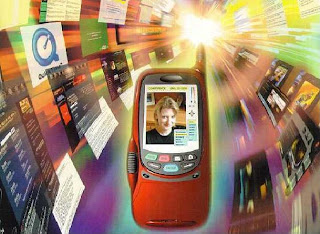 picture from: http://www.samsung.com/global/business/telecommunication/productType.do?ctgry_group=11&ctgry_type=17
picture from: http://www.samsung.com/global/business/telecommunication/productType.do?ctgry_group=11&ctgry_type=17In this blog, I first introduced evolution of mobile generation networks from 1G to 3G. Second, I analyzed the advantages and disadvantages of GSM, which is still dominant in the worldwide mobile market, and summarized that the migration path from 2.5G to 3G via GPRS and EDGE to UMTS is the path that the majority of mobile carriers worldwide intend to take. Because of various emerging technologies, like GPRS, EDGE, WCDMA, CDMA2000 and so on and other aspects such as potential of new markets, fixed-to-mobile substitution, I believe that the global mobile market will still grow in the future ten years. Hence, I pointed out that the evolution from GSM to 3G would bring more opportunities to this changing industry.
Then I focused on the WCDMA technology, the 3G successor to GSM. After listing the features of WCDMA technology, I made a comparison between WCDMA and its strong competitor CDMA2000 from both technical and economic aspects. Higher volumes permit more attractive prices for network infrastructure, system technology and for mobile end devices. This is already having an effect on the lower end of the market, where unsubsidized cdmaOne terminals cost almost twice as much as GSM/GPRS devices. The expenditure for research and development will also be proportional to the share of the global market, with a positive effect on the speed and time to market. The product portfolio makes this clear: Over 300 GSM handsets are on the market, approximately twice the number of cdmaOne models. Hence, the technologies derived from GSM enjoy the benefits that come from longer periods of development and maturation. The range of value-added services is both wider and more multi-faceted. The return on investment can be achieved faster. Roaming and service continuity also speak out in favor of migration to W-CDMA technology.
In addition, I also talked about HSDPA, the first evolution of WCDMA technology. There were almost 3 times the number of commercial HSDPA network launches compared to CDMA 1x EV-DO from mid-June to mid-September 2006.
At last, I analyzed the possible strategy for GSM operators by integrating GSM and WCDMA as a seamless network to meet the market with respect to the number of subscribers, the way they will use the services, the amount of money customers will spend on telecom services, the amount of money operators will save. All in all, this GSM/WCDMA integrated seamless network adds flexibility in the 3G deployments, enhances system performance, protects network investments through reuse of resources and supports the growth of today’s services as well as the creation and growth of mobile services beyond voice. So my conclusion is that WCDMA/HSDPA will be the leading 3G technology globally in the future.




